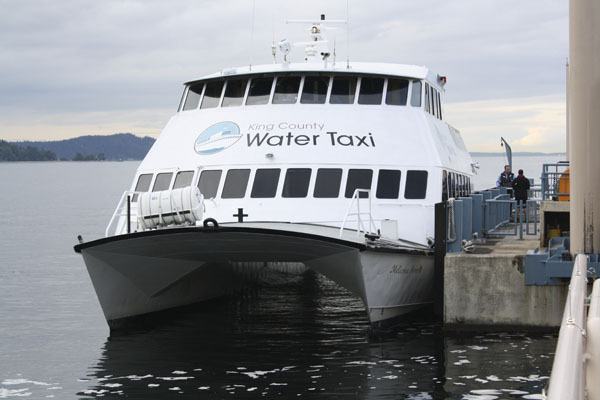The pedestrian-only boat between Vashon and Seattle will be able to carry more passengers on its six daily sailings next year, helping to alleviate at-capacity crossings that have left some riders standing on the dock.
Currently, under Coast Guard rules, the King County Ferry District can allow 150 passengers onto the boat, even though the Melissa Ann, a 77-foot catamaran that once serviced commuters in Hawaii, has room for additional passengers.
Starting in 2012, however, the county will allow 172 passengers per sailing, a move it was able to announce after discussions with the Coast Guard and a green light from the board that oversees the ferry district.
The higher passenger count means the ferry district will need to add another life raft and make some operational changes, said Scott Davis, the director of the marine division for the county’s Department of Transportation. But because of the increased ridership, “We believe we’ll recoup our costs,” he said.
The popular water taxi has had several afternoon sailings that were at-capacity, forcing some riders to wait an hour for the next crossing. In 2010, the boat left riders on the dock 78 times; so far this year, there have been 84 occurrences, Davis said. Last month was one of the worst, with 15 sailings that left people behind.
Davis said the greater capacity should address the problem and help the county build the kind of system it wants.
“We’re trying to build a water taxi service that is reliable and that everybody can count on. And when people aren’t assured of getting a spot, they at least perceive that they can’t count on it,” Davis said.
Meanwhile, he said, the county is moving forward on the construction of a new water taxi with a 250-seat capacity, a boat that will be funded largely with grants, Davis said.
Davis said recent decisions should give commuters confidence that the cash-strapped ferry district continues to have support among county’s policy makers. At the same time, he noted, the system still lacks a solid revenue stream.
“I’m encouraged that it isn’t going to go anywhere anytime soon,” Davis said. “But the reality is that our budget isn’t sustainable.”



